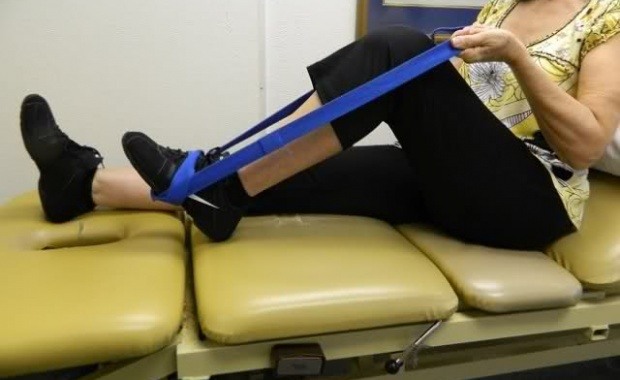Why is Physiotherapy Important after Total Knee Replacement?
The emphasis on the need for professionally assisted recovery following something as severe as a knee replacement surgery is no brainer. The knee is a part of the body that performs so many vital functions that help us move about, run, crawl, etc. However unless one has had to experience a damage to the knee that has rendered them immobile, it is quite hard to appreciate the functioning of the knees.
What Does the Surgery Involve and Why is it Done?
Total knee replacement surgery, also known as a total knee arthroplasty is a procedure performed on patients who mainly suffer from osteoarthritis- a condition that disables the natural shock absorbing mechanism of the knee in the patient. This condition is more prevalent in women above the age of 45 who are more prone to osteoarthritis following menopause. Hence, the surgery is more often than not indicated for the women of this age whose functioning and the ability to go about daily life is being restricted due to increasing pain in the knees and reduced mobility owing to the same. Constant pain is enough to render everyone feeling helpless and cause a distaste to life- hence the surgery to replace the articular (joining) surface of the knee with a polyethylene material that retakes the functioning of absorbing shock.
So understandably, many patients go ahead and get the surgery done to gain relief from the constant and increasing pain along with the lack of ability to live normally. But, what next?
Like most surgeries, there are numerous complications of this one as well.
Complications of Total Knee Replacement Surgery
The most frequent complaint that happens early on in the patients following the surgery is a sense of stiffness that just doesn’t seem to go away. It does not cause pain, but it restricts mobility by a great deal. This stiffness causes discomfort to the patient who feels like they haven’t benefited from the surgery as such. Following the surgery, on later stages, there may arise more complications including instability of the knee joint that may result in dislocation, damage occurring to the nerves in the area, infections caused to the material and so on. Sometimes, there may occur a certain level of swelling to the area that leads to further joint pain.
So what’s the solution to these complications?
Physiotherapy- Why is it necessary?
The need for rehabilitation is not limited to movement exercises and usual physiotherapy methods. Following surgery, there are a few prerequisites that aren’t just limited to the hospital- who generally discharge the patient following the initial stages of recovery. Rehabilitation plays a role in accelerating the recovery of the patient from the surgery as well as providing the medical attention, constant care and help that the patient needs to prevent the complications from occurring. Once the patient is on his or her way to recovery from the operation, they will need extra attention to make sure that there is no possibility of infection and constant examination of the patient guarantees that most of the preventable complications among the listed ones are avoided consciously.
When proper physiotherapy is provided within a well-facilitated health centre and the patient is provided with the attention and support of different rehabilitation experts focusing on various aspects of the therapy including the medical supervision, physiotherapeutic exercises, care and attention of the nurses, proper diet control advice, psychological help and support to the families, this guarantees that there is indeed positive recovery on the patient’s condition as opposed to them having to deal with it in the absence of the recommended amount of aid.
A variety of exercises are taught to the patient and they’re helped with these exercises which lays a very rapid onset to the post-surgical recovery process and this has always shown positive results in the past. Moreover, depending on the various needs of the patient, keeping in mind every patient is an individual and requires individual attention and a plan best suited to them, plans of action on therapy are curated accordingly. The age of the patient, other health conditions of the patients, their occupational needs and demands, where they live and who they live with, among other specifications play a huge role in deciding the right mode of therapy that is required for the patient.
The constant training to regain muscle functioning and strength plays a huge role in successful post-surgery recovery.
Among the rehabilitation processes, every aspect plays a major role. The physiotherapy part is rather obvious on its benefits and how it helps the patient but a good and wholesome recovery procedure includes more than that. Occupational therapy plays a huge role in preparing the patient for a life ahead, individually, if necessary and carry about their day to day activities without much hassle and minimal need for support from others. Another important rehabilitation factor required is the psychological support provided to the patient which goes hand in hand with the counselling provided to the family such that both the patients and their families can carry ahead a life as normally as possible.
To ditch the walker and get back on one’s own feet without support, physiotherapy plays a huge role in helping the patient take this leap and effectively lead a life better than it was before the procedure whilst enhancing the positive effects of the surgery.

